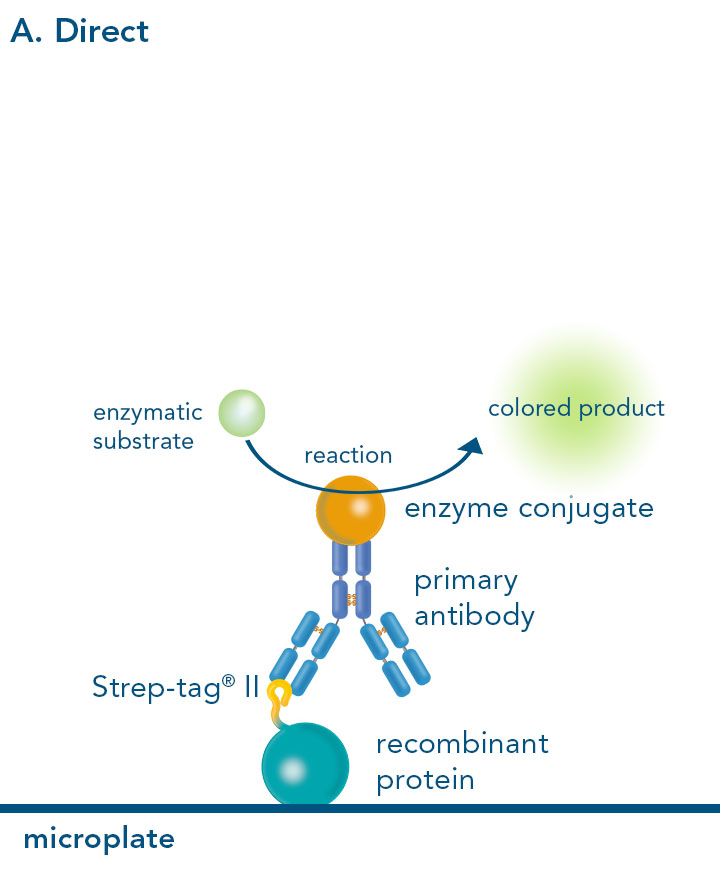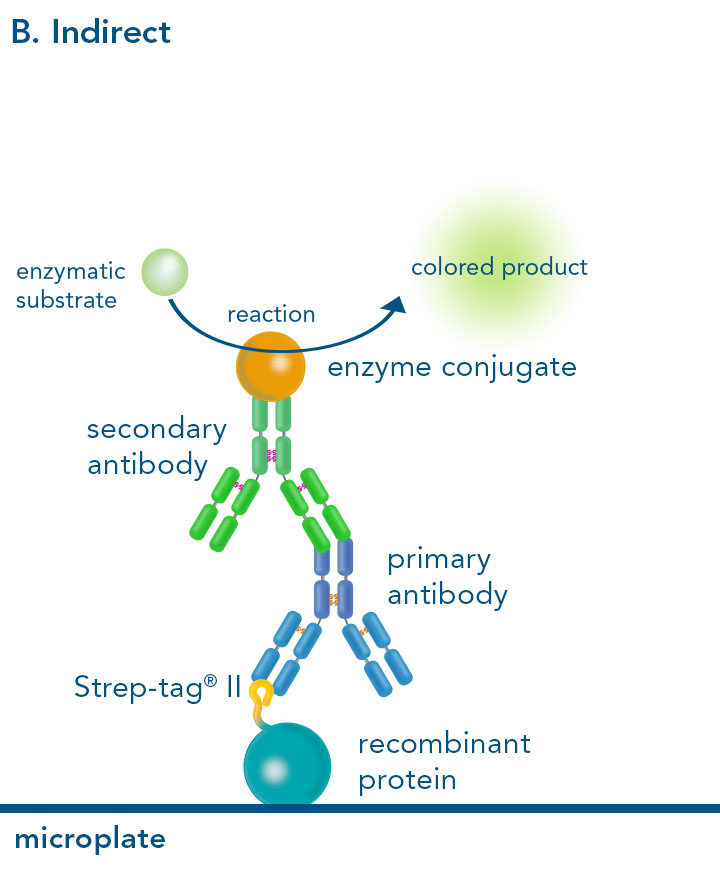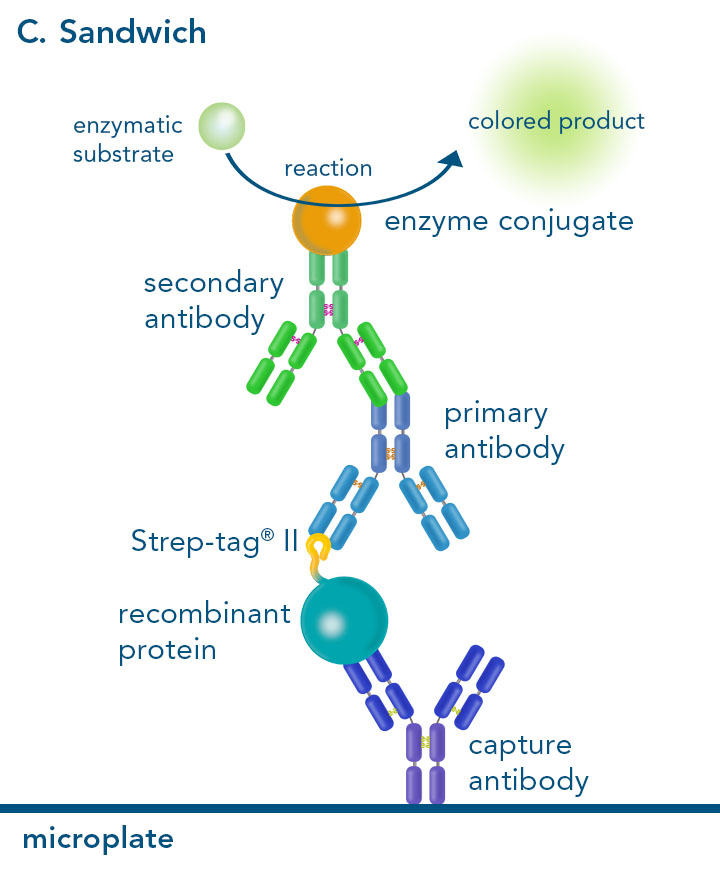ELISA – Enzyme-linked immunosorbent assay

Direct ELISA

Indirect ELISA

Sandwich ELISA
The enzyme-linked immunosorbent assay, short ELISA, is a commonly used method for detection and quantification of ligands, such as proteins, peptides, or hormones even in a complex mixture. ELISA is a plate-based technique in which, depending on the type, either the target ligand or the capturing reagent is immobilized on a microplate. While there are different types of ELISA, the essential components are always consistent. Firstly, a ligand of interest, which is to be detected and potentially quantified.
Secondly, an antibody, like StrepMAB-Immo or StrepMAB-Classic, or other detection reagent, like our conjugated Strep-Tactin®XT for specific recognition of the ligand. Lastly, an enzymatic reporter, the substrate conversion of which can be used as measurable signal.
While different formats exist, the basic principle when performing any kind of ELISA is the same.
- Coating or capturing of the directly or indirectly immobilized ligand on the microplate.
- Blocking of free surface-binding sites of the microplate.
- Detection of the ligand by using ligand-specific reagents, e.g. antibodies.
- Readout of signal produced by the enzymatic reaction of labeled primary or secondary antibody.
Depending on the experimental needs, one can choose between direct, indirect and sandwich ELISA. The formats differ in the way of capturing and detecting the target ligand.
The direct and indirect ELISA both start with the immobilization of the ligand on a microplate. Whereas the direct ELISA only requires a labeled primary antibody for detection, in an indirect ELISA an unlabeled primary antibody first, and then a labeled secondary antibody is used. However, instead of a primary antibody it is possible to use Strep-Tactin® or Strep-Tactin®XT conjugates for Strep-tagged ligands, which is particularly beneficial because a second antibody for sensitive signal detection becomes redundant. Alternatively, StrepMAB-Classic conjugated with HRP can be applied, also avoiding the use of a secondary antibody.
In a sandwich ELISA, the plate is coated with a capturing molecule, like an antibody. Subsequently, the ligand is added and “sandwiched” between the capturing and the detecting antibody. Here, the primary antibody detecting the ligand is generally unlabeled, while a labeled secondary antibody is added for quantification. For capturing a desired Strep-tagged protein, plates can be coated using our StrepMAB-Immo or StrepMAB-Classic antibody. However, we recommend StrepMAB-Immo for this purpose due to its higher affinity towards the Strep-tag®. Convenient pre-coated plates with Strep-Tactin®XT are additionally available.
As enzymatic reporter, horse-radish peroxidase (HRP) is most commonly applied. It convert a certain substrate into a detectable product. As substrate, a variety of different chromogenic, fluorescent, and chemiluminescent products are available, always depending on the desired sensitivity and the laboratory equipment at-hand. In case a fluorescent detection method is desired, we offer various fluorescent labels conjugated to Strep-Tactin®XT, StrepMAB-Immo or StrepMAB-Classic.

